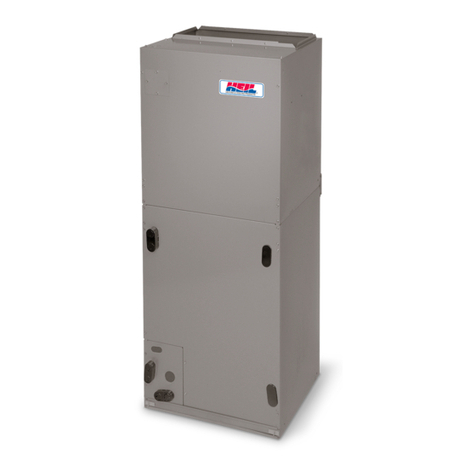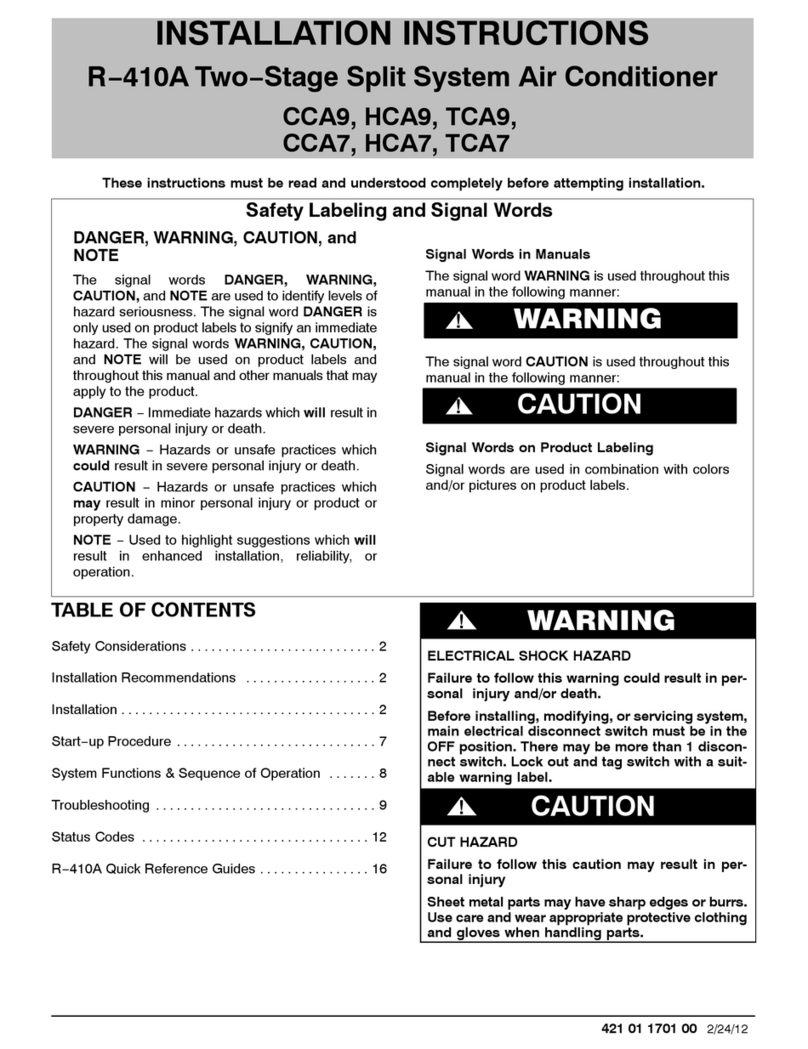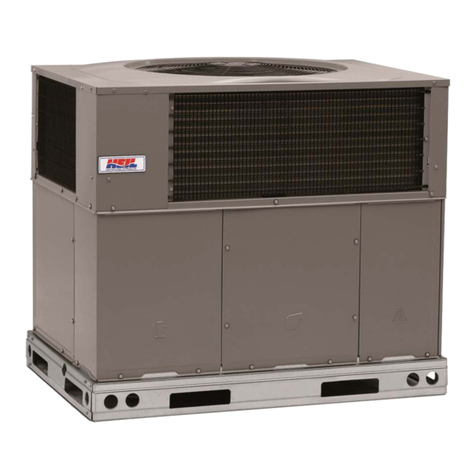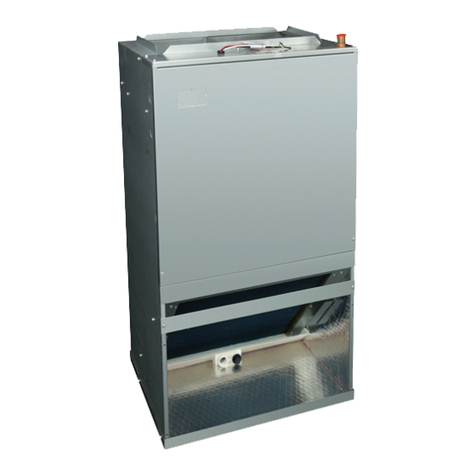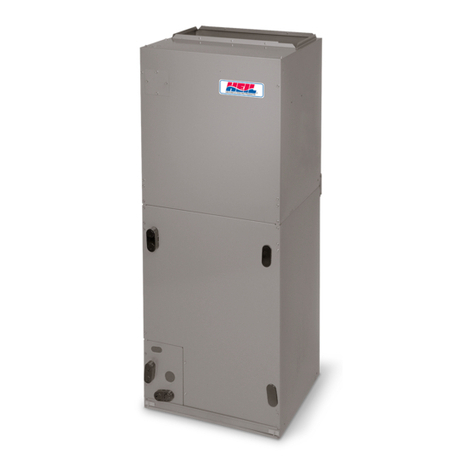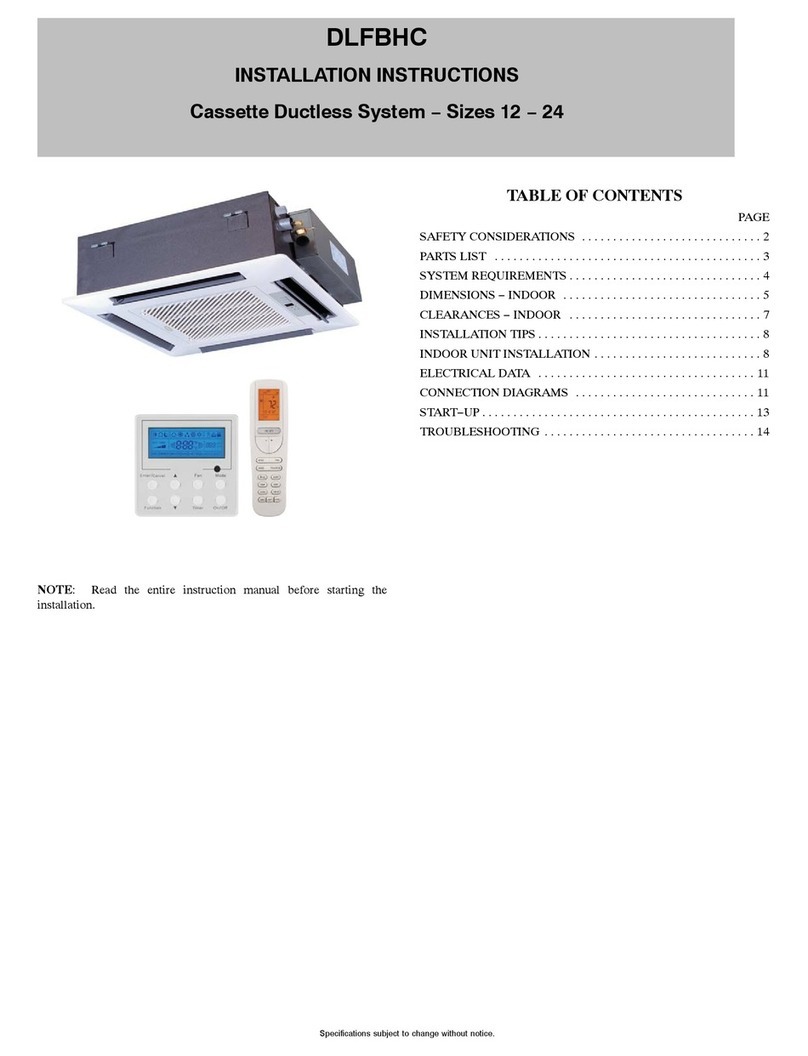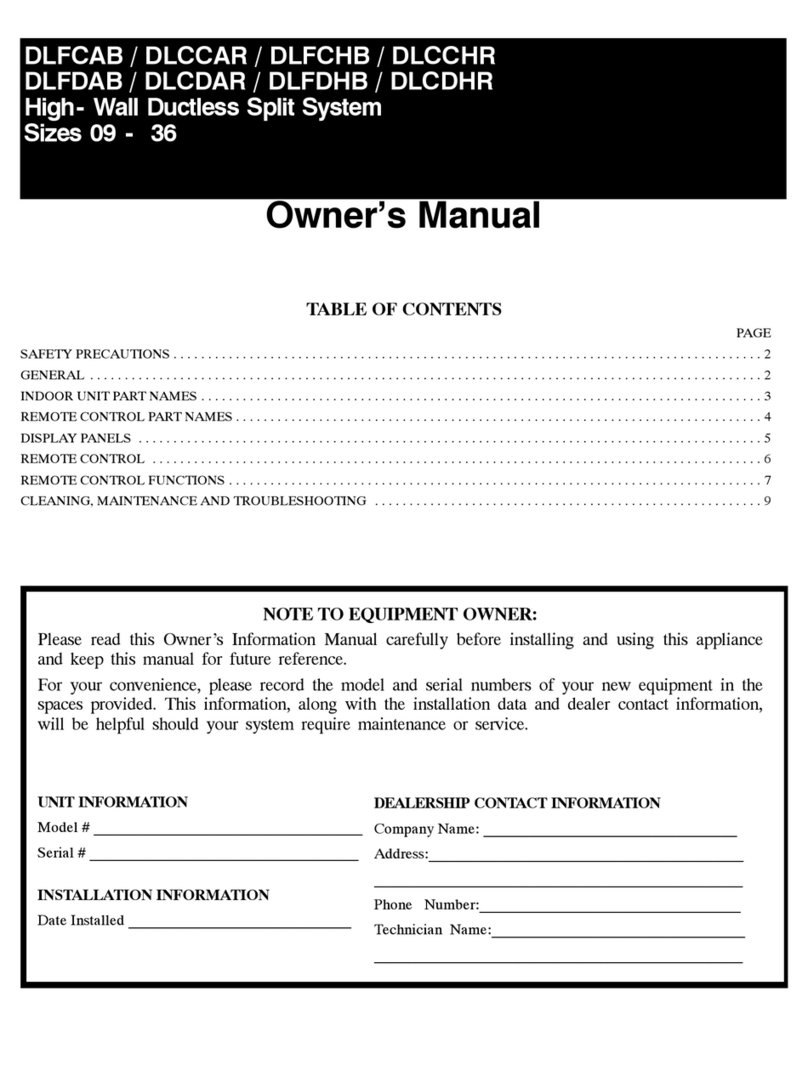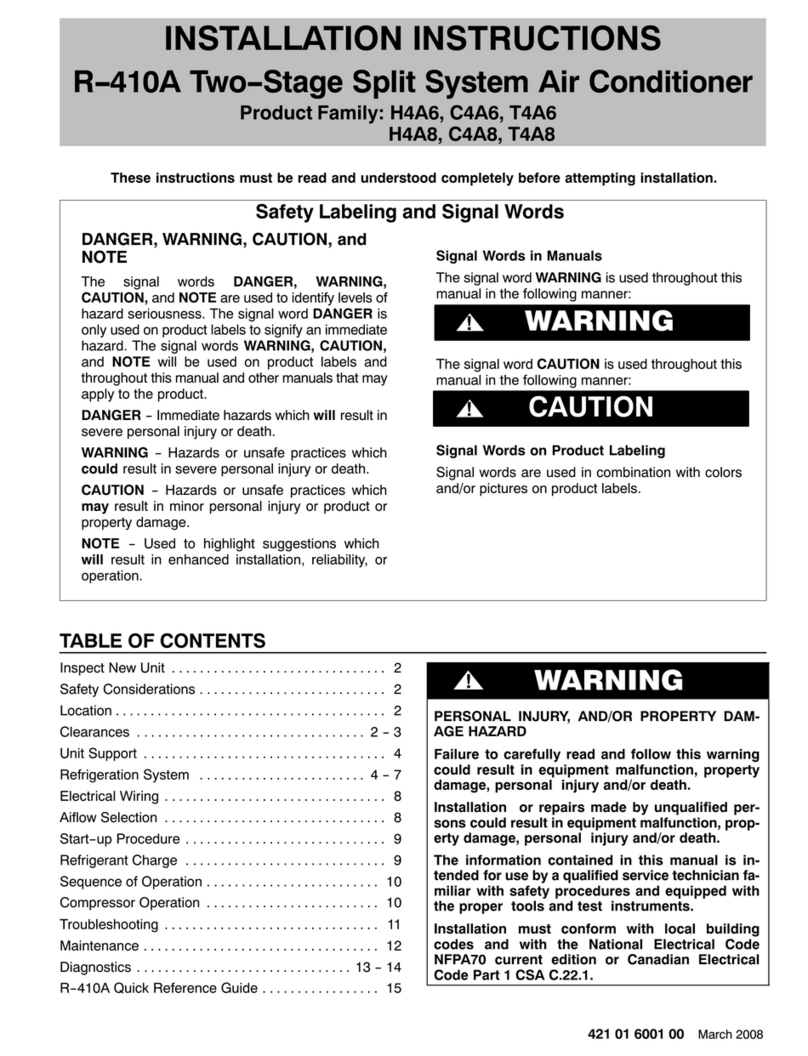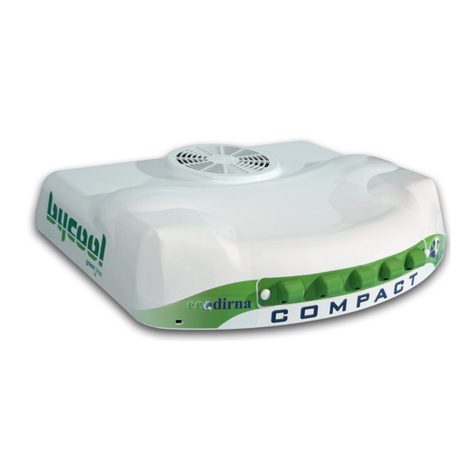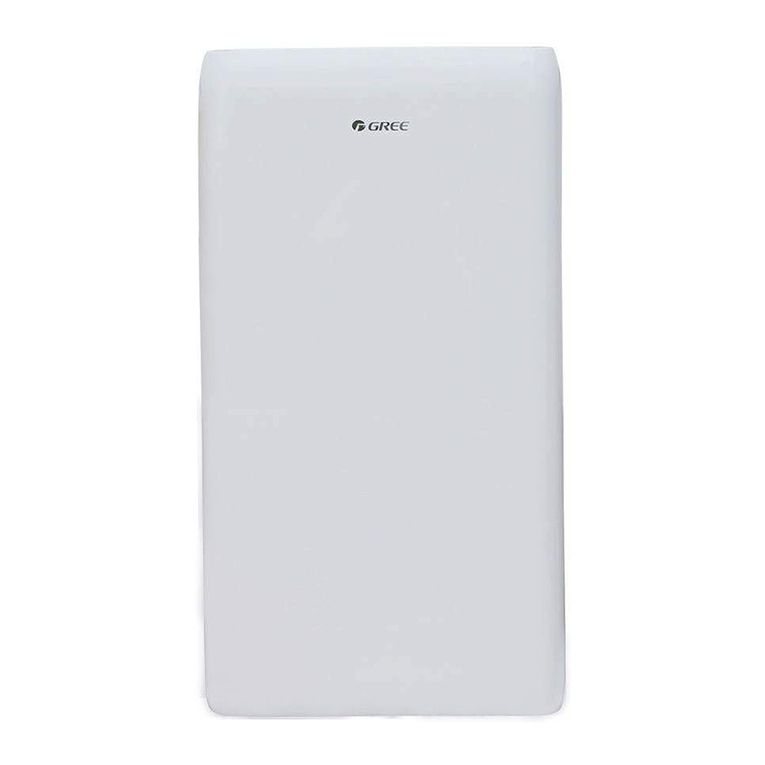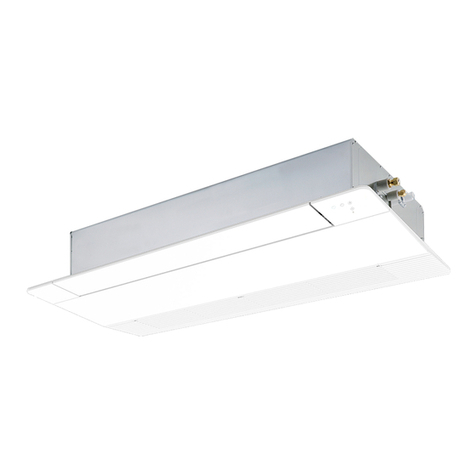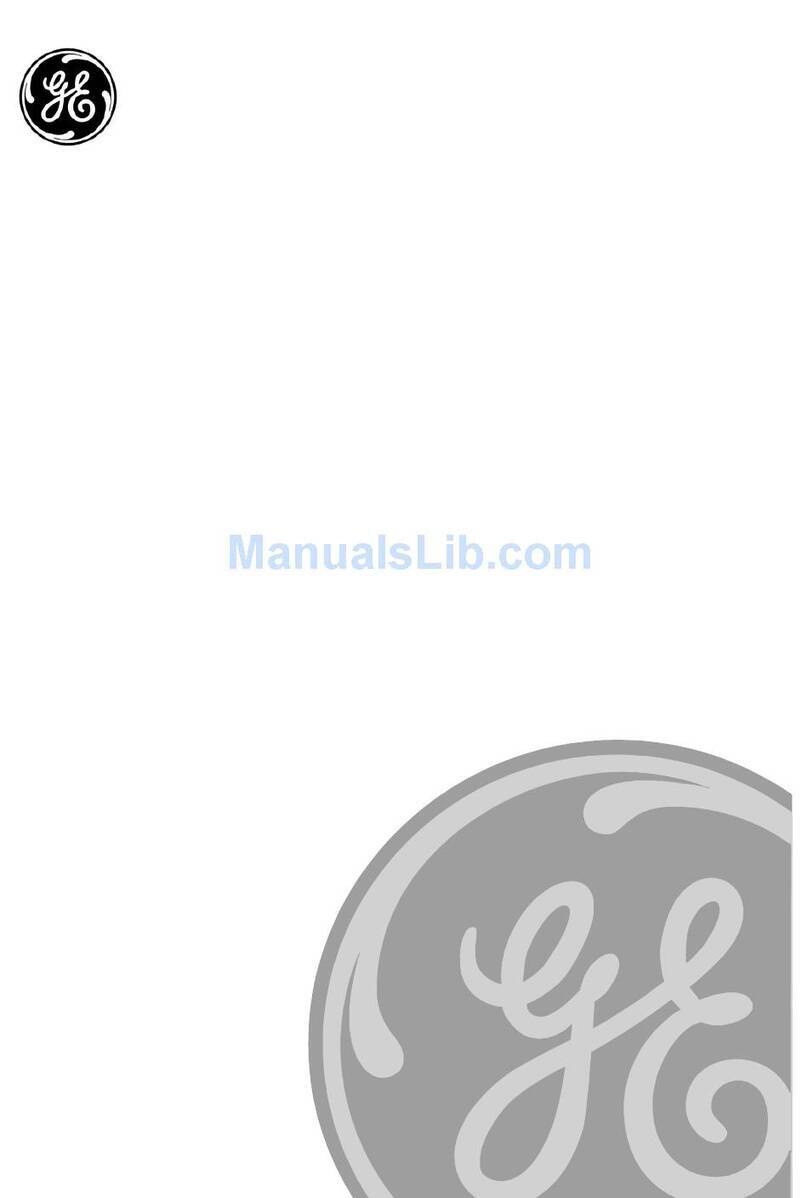HEIL PAR524--60 User manual

51901190402 03/2015
Specifications subject to change without notice.
INSTALLATION INSTRUCTIONS
R--410A 2--Stage Single Package Electric Cooling
PAR524--60
1&3Phase
IMPORTANT: Effective January 1, 2015, all split system and
packaged air conditioners must be installed pursuant to
applicable regional efficiency standards issued by the
Department of Energy.
NOTE: Read the entire instruction manual before starting the
installation.
NOTE: Installer: Make sure the Owner’s Manual and Service
Instructions are left with the unit after installation.
TABLE OF CONTENTS
PAGE
SAFETY CONSIDERATIONS 1.................................
INTRODUCTION 2...........................................
RECEIVING AND INSTALLATION 2.............................
CHECK EQUIPMENT 2.......................................
IDENTIFY UNIT 2............................................
INSPECT SHIPMENT 2.......................................
PROVIDE UNIT SUPPORT 2..................................
ROOF CURB 2...............................................
SLAB MOUNT 2..............................................
STANDARD COPPER TUBE ALUMINUM FIN 6..................
OPTIONAL COPPER TUBE COPPER FIN 6.....................
PROVIDE CLEARANCES 6....................................
FIELD--FABRICATE DUCTWORK 6.............................
RIG AND PLACE UNIT 6......................................
INSPECTION 7..............................................
RIGGING/LIFTING OF UNIT 7..................................
CONNECT CONDENSATE DRAIN 7............................
INSTALL DUCT CONNECTIONS 7..............................
CONFIGURING UNITS FOR DOWNFLOW DISCHARGE 8.........
INSTALL ELECTRICAL CONNECTIONS 9.......................
HIGH--VOLTAGE CONNECTIONS 9.............................
SPECIAL PROCEDURES FOR 208--V OPERATION 9.............
CONTROL VOLTAGE CONNECTIONS 9.........................
STANDARD CONNECTION 9..................................
TRANSFORMER PROTECTION 10..............................
PHYSICAL DATA--UNIT PAR5 10................................
MINIMUM AIRFLOW 10........................................
PRE--START--UP 11...........................................
START--UP 11................................................
CHECK FOR REFRIGERANT LEAKS 11.........................
START--UP ADJUSTMENTS 11.................................
CHECKING AND ADJUSTING REFRIGERANT CHARGE 11.........
INDOOR AIRFLOW AND AIRFLOW ADJUSTMENTS 12............
OPERATION MODES AND FAN SPEEDS 12......................
COLOR CODING FOR INDOOR FAN MOTOR LEADS 12...........
COOLING SEQUENCE OF OPERATION 13.......................
DRY COIL AIR DELIVERY 14...................................
WET COIL PRESSURE DROP 15...............................
ECONOMIZER WITH 1--IN. FILTER PRESSURE DROP 16..........
FILTER PRESSURE DROP TABLE 16...........................
ELECTRIC HEAT PRESSURE DROP TABLES 16..................
DIMENSIONS 16..............................................
MAINTENANCE 22............................................
AIR FILTER 22................................................
INDOOR BLOWER AND MOTOR 22.............................
OUTDOOR FAN 23............................................
ELECTRICAL CONTROLS AND WIRING 23.......................
REFRIGERANT CIRCUIT 24...................................
EVAPORATOR AIRFLOW 24...................................
R--410A ITEMS 24............................................
PRESSURE SWITCHES 24.....................................
REFRIGERANT 24............................................
COMPRESSOR OIL 25.........................................
ROOFS WITH SYNTHETIC MATERIALS 25.......................
A09034
Figure 1 -- Unit PAR5
LIQUID LINE FILTER DRIER 25.................................
R--410A REFRIGERANT CHARGING 25..........................
TROUBLESHOOTING 25.......................................
START--UP CHECKLIST 25.....................................
SAFETY CONSIDERATIONS
Improper installation adjustment, alteration, service,
maintenance, or use can cause explosion, fire, electrical shock,
or other conditions which may cause death, personal injury, or
property damage. Consult a qualified installer, service agency,
or your distributor or branch for information or assistance. The
qualified installer or agency must use factory--authorized kits or
accessories when modifying this product Refer to the individual
instructions packaged with the kits or accessories when
installing.
Follow all safety codes. Wear safety glasses, protective
clothing, and work gloves. Use quenching cloth for brazing
operations. Have a fire extinguisher available. Read these
instructions thoroughly and follow all warnings or cautions
included in literature and attached to the unit. Consult local
building codes, the current editions of the National Electrical
Code (NEC) NFPA 70.
In Canada refer to the current editions of the Canadian
electrical Code CSA C22.1.
Recognize safety information. This is the safety--alert symbol
. When you see this symbol on the unit and in instructions or
manuals, be alert to the potential for personal injury.
Understand these signal words; DANGER, WARNING, and
CAUTION. These words are used with the safety--alert symbol.
DANGER identifies the most serious hazards which will result
in severe personal injury or death. WARNING signifies hazards
which could result in personal injury or death. CAUTION is
used to identify unsafe practices which may result in minor
personal injury or product and property damage. NOTE is used
to highlight suggestions which will result in enhanced
installation, reliability, or operation.

251901190402
!WARNING
EXPLOSION HAZARD
Failure to follow this warning could
result in death serious personal
injury, and/or property damage.
Never use air or gases containing
oxygen for leak testing or
operating refrigerant compressors.
Pressurized mixtures of air or
gases containing oxygen can lead
to an explosion.
ELECTRICAL SHOCK HAZARD
Failure to follow this warning could result in personal
injury or death.
Before installing or servicing system, always turn off
main power to system and install lockout tag. There
may be more than one disconnect switch. Turn off
accessory heater power switch if applicable.
!WARNING
PERSONAL INJURY AND ENVIRONMENTAL
HAZARD
Failure to relieve system pressure could result in
personal injury and/or death.
1. Relieve pressure and recover all refrigerant before
servicing existing equipment, and before final unit
disposal. Use all service ports and open all
flow--control devices, including solenoid valves.
2. Federal regulations require that you do not vent
refrigerant into the atmosphere. Recover during
system repair or final unit disposal.
!WARNING
CUT HAZARD
Failure to follow this caution may result in personal
injury.
When removing access panels (see Figure 16)or
performing maintenance functions inside your unit, be
aware of sharp sheet metal parts and screws.
Although special care is taken to reduce sharp edges
to a minimum, be extremely careful and wear
appropriate protective clothing, safety glasses and
gloves when handling parts or reaching into the unit.
!CAUTION
INTRODUCTION
The PAR5 packaged air conditioner is fully self--contained and
designed for outdoor installation (See Figure 1 ). See Figure 2
and Figure 3 for unit dimensions. All unit sizes have discharge
openings for both horizontal and downflow configurations, and
are factory shipped with all downflow duct openings covered.
The unit may be installed either on a rooftop or on a
ground--level cement slab. (See Figure 4 for roof curb
dimensions.)
RECEIVING AND INSTALLATION
Step 1 — Check Equipment
IDENTIFY UNIT
The unit model number and serial number are printed on the
unit informative plate. Check this information against shipping
papers.
INSPECT SHIPMENT
Inspect for shipping damage before removing packaging
materials. If unit appears to be damaged or is torn loose from
its anchorage, have it examined by transportation inspectors
before removal. Forward claim papers directly to transportation
company. Manufacturer is not responsible for any damage
incurred in transit. Check all items against shipping list.
Immediately notify the nearest equipment distribution office if
any item is missing. To prevent loss or damage, leave all parts
in original packages until installation.
If the unit is to be mounted on a curb in a downflow application,
review Step 7 to determine which method is to be used to
remove the downflow panels before rigging and lifting into
place. The panel removal process may require the unit to be on
the ground.
Step 2 — Provide Unit Support
IMPORTANT:The unit must be secured to the curb by
installing screws through the bottom of the curb flange and into
the unit base rails. When installing large base units onto the
common curb, the screws must be installed before allowing the
full weight of the unit to rest on the curb. A minimum of six
screws are required for large base units. Failure to secure unit
properly could result in an unstable unit. See Warning near
Rigging/Lifting information and accessory curb instructions for
more details.
For hurricane tie downs, contact distributor for details and PE
(Professional Engineering) Certificate if required.
ROOF CURB
Install accessory roof curb in accordance with instructions
shipped with curb (See Figure 4). Install insulation, cant strips,
roofing, and flashing. Ductwork must be attached to curb.
IMPORTANT: The gasketing of the unit to the roof curb
is critical for a water tight seal. Install gasketing material
supplied with the roof curb. Improperly applied gasketing
also can result in air leaks and poor unit performance.
Curb should be level to within 1/4 in. (6.35 mm) (See Figure 6).
This is necessary for unit drain to function properly. Refer to
accessory roof curb installation instructions for additional
information as required.
Installation on older “G” series roof curbs.
Two accessory kits are available to aid in installing a new “G”
series unit on an old “G” roof curb.
1. Accessory kit number CPADCURB001A00, (small
chassis) and accessory kit number CPADCURB002A00,
(large chassis) includes roof curb adapter and gaskets
for the perimeter seal and duct openings. No additional
modifications to the curb are required when using this kit.
2. An alternative to the adapter curb is to modify the
existing curb by removing the outer horizontal flange and
use accessory kit number CPGSKTKIT001A00 which
includes spacer blocks (for easy alignment to existing
curb) and gaskets for the perimeter seal and duct
openings. This kit is used when existing curb is modified
by removing outer horizontal flange.
UNIT/STRUCTURAL DAMAGE HAZARD
Failure to follow this caution may result in property
damage.
Ensure there is sufficient clearance for saw blade
when cutting the outer horizontal flange of the roof
curb so there is no damage to the roof or flashing.
!CAUTION
SLAB MOUNT
Place the unit on a solid, level pad that is at least 2 in. (51 mm)
above grade. The pad should extend approximately 2 in. (51
mm) beyond the casing on all 4 sides of the unit (See
Figure 7). Do not secure the unit to the pad except when
required by local codes.

51901190402 3
Figure 2 -- PAR524--30 Unit Dimensions

451901190402
Figure 3 -- PAR536--60 Unit Dimensions

51901190402 5
RETURN
AIR
SMALL
BASE
UNIT
SUPPLY
AIR
LARGE
BASE
UNIT
UNIT PLACEMENT ON
COMMON CURB
LARGE CURB SMALL OR LARGE BASE UNIT
SMALL/COMMON CURB
ROOF CURB DETAIL
Wood nailer*
Roofcurb*
Insulation
(field supplied)
*Provided with roofcurb
Cant strip
field supplied
Roofing material
field supplied
Flashing field
supplied
HVAC unit
base rails
Roofcurb
Sealing
Gasket
HVAC unit
basepan
Anchor screw
A09090
A09413
A09094
A09415
C
B
AF
DE
Dashed lines show cross support
location for large basepan units.
G
H
C
B
A
F
D
E
G
H
A09414
UNIT
SIZE
CATALOG
NUMBER
A
IN.
(mm)
B
(small/common
base)
IN. (mm)*
B
(large base)
IN. (mm)*
C
IN.
(mm)
D
IN.
(mm)
E
IN.
(mm)
F
IN.
(mm)
G
IN. (mm)
H
IN. (mm)
Small
or
Large
CPRFCURB010A00 11 (279) 10 (254)
14 (356) 16 (406) 47.8
(1214)
32.4
(822) 2.7 (69)
30.6 (778)
46.1 (1170)
CPRFCURB011A00 14 (356)
Large CPRFCURB012A00 11 (279) 14 (356) 43.9
(1116) 42.2 (1072)
CPRFCURB013A00 14 (356)
* Part Numbers CPRCURB010A00 and CPRCURB011A00 can be used on both small and large basepan units. The cross supports must be located based on whether the
unit is a small basepan or a large basepan.
NOTES:
1. Roof curb must be set up for unit being installed.
2. Seal strip must be applied, as required, to unit being installed.
3. Roof curb is made of 16--gauge steel.
4. Attach ductwork to curb (flanges of duct rest on curb).
5. Insulated panels: 1--in. (25.4 mm) thick fiberglass 1 lb. density.
Figure 4 -- Roof Curb Dimensions

651901190402
ACCESS PANELS MUST BE IN PLACE WHEN RIGGING.
PANNEAUX D'ACCES DOIT ÊTRE EN PLACE POUR MANIPULATION.
50CY502286 2.0
CAUTION - NOTICE TO RIGGERS
PRUDENCE - AVIS AUX MANIPULATEUR
Use top skid as spreader bar. / Utiliser la palette du haut comme barre de répartition
SEAL STRIP MUST BE IN
PLACE BEFORE PLACING
UNIT ON ROOF CURB
DUCTS
DETAIL A
VOIR DÉTAIL A
MINIMUM HEIGHT: 36" (914.4 mm)
HAUTEUR MINIMUM
UNIT HEIGHT
HAUTEUR D'UNITÉ
SEE DETAIL A
VOIR DÉTAIL A
BANDE SCELLANT DOIT ÊTRE
EN PLACE AVANT DE PLACER
L'UNITÉ SUR LA BASE DE TOIT
A09051
Standard Copper Tube Aluminum Fin
SMALL CABINET LARGE CABINET
Unit* 24 30 Unit* 36 42 48 60
lb kg lb kg lb kg lb kg lb kg lb kg
Rigging
Weight 335 152.0 342 155.1 Rigging
Weight 397 180.1 400 181.4 452 205.0 472 214.1
NOTE: See dimensional drawing for corner weighs.
Optional Copper Tube Copper Fin
SMALL CABINET LARGE CABINET
Unit* 24 30 Unit* 36 42 48 60
lb kg lb kg lb kg lb kg lb kg lb kg
Rigging
Weight 373 169.2 399 181.0 Rigging
Weight 459 208.2 462 210.0 536 243.1 562 255.0
NOTE: See dimensional drawing for corner weighs.
Figure 5 -- PAR5 Unit Suggested Rigging
Step 3 — Provide Clearances
The required minimum service clearances are shown in
Figure 2 and Figure 3. Adequate ventilation and outdoor air
must be provided. The outdoor fan draws air through the
outdoor coil and discharges it through the top fan grille. Be sure
that the fan discharge does not recirculate to the outdoor coil.
Do not locate the unit in either a corner or under an overhead
obstruction. The minimum clearance under a partial overhang
(such as a normal house overhang) is 48 in. (1219 mm) above
the unit top. The maximum horizontal extension of a partial
overhang must not exceed 48 in. (1219 mm)
IMPORTANT: Do not restrict outdoor airflow. An air
restriction at either the outdoor--air inlet or the fan
discharge may be detrimental to compressor life.
Do not place the unit where water, ice, or snow from an
overhang or roof will damage or flood the unit. Do not install the
unit on carpeting or other combustible materials. Slab--mounted
units should be at least 2 in. (51 mm) above the highest
expected water and runoff levels. Do not use unit if it has been
under water.
Step 4 — Field--Fabricate Ductwork
Secure all ducts to roof curb and building structure on vertical
discharge units. Do not connect ductwork to unit. For horizontal
applications, unit is provided with flanges on the horizontal
openings. All ductwork should be secured to the flanges.
Insulate and weatherproof all external ductwork, joints, and roof
openings with counter flashing and mastic in accordance with
applicable codes.
Ducts passing through an unconditioned space must be
insulated and covered with a vapor barrier. If a plenum return is
used on a vertical unit, the return should be ducted through the
roof deck to comply with applicable fire codes. See unit rating
plate for any required clearances around ductwork. Cabinet
return--air static shall not exceed --.25 IN. W.C.
Step 5 — Rig and Place Unit
Rigging and handling of this equipment can be hazardous for
many reasons due to the installation location (roofs, elevated
structures, etc.).
Only trained, qualified crane operators and ground support staff
should handle and install this equipment.
When working with this equipment, observe precautions in the
literature, on tags, stickers, and labels attached to the
equipment, and any other safety precautions that might apply.
Training for operators of the lifting equipment should include,
but not be limited to, the following:
1. Application of the lifter to the load, and adjustment of the
lifts to adapt to various sizes or kinds of loads.

51901190402 7
2. Instruction in any special operation or precaution.
3. Condition of the load as it relates to operation of the
lifting kit, such as balance, temperature, etc.
Follow all applicable safety codes. Wear safety shoes and work
gloves.
A
B
C
MAXIMUM ALLOWABLE
DIFFERENCE in. (mm)
A-C
1/4 1/4 1/4
(6.35) (6.35) (6.35)
A-B B-C
A07925
Figure 6 -- Unit Leveling Tolerances
INSPECTION
Prior to initial use, and at monthly intervals, all rigging shackles,
clevis pins, and straps should be visually inspected for any
damage, evidence of wear, structural deformation, or cracks.
Particular attention should be paid to excessive wear at hoist
hooking points and load support areas. Materials showing any
kind of wear in these areas must not be used and should be
discarded.
UNIT FALLING HAZARD
Failure to follow this warning could result in personal
injury or death.
Never stand beneath rigged units or lift over people.
!WARNING
1. Leave top shipping skid on the unit for use as a spreader
bar to prevent the rigging straps from damaging the unit.
If the skid is not available, use a spreader bar of
sufficient length to protect the unit from damage.
PROPERTY DAMAGE HAZARD
Failure to follow this warning could result in personal
injury.
When straps are taut, the clevis should be a minimum
of 36 in. (914 mm) above the unit top cover.
!WARNING
Rigging/Lifting of Unit (See Figure 5)
UNIT FALLING HAZARD
Failure to follow this warning could result in personal
injury or death.
Large base units must be secured to common curb
before allowing full weight of unit to rest on curb.
Install screws through curb into unit base rails while
rigging crane is still supporting unit.
!WARNING
Lifting holes are provided in base rails as shown.
1. Attach shackles, clevis pins, and straps to the base rails
of the unit. Be sure materials are rated to hold the weight
of the unit (See Figure 5).
2. Attach a clevis of sufficient strength in the middle of the
straps. Adjust the clevis location to ensure unit is lifted
level with the ground.
After the unit is placed on the roof curb or mounting pad,
remove the top skid.
OPTIONAL
RETURN
AIR
OPENING
OPTIONAL
SUPPLY
AIR
OPENING
EVAP. COIL COND. COIL
2˝
(50.8mm)
A07926
Figure 7 -- Slab Mounting Detail
Step 6 — Connect Condensate Drain
NOTE: When installing condensate drain connection be sure
to comply with local codes and restrictions.
Model PAR5 disposes of condensate water through a 3/4 in.
NPT fitting which exits through the base on the evaporator coil
access side. See Figure 2 and Figure 3 for location.
Condensate water can be drained directly onto the roof in
rooftop installations (where permitted) or onto a gravel apron in
ground level installations. Install a field--supplied 2--in. (51 mm)
condensate trap at end of condensate connection to ensure
proper drainage. Make sure that the outlet of the trap is at least
1 in. (25 mm) lower than the drain pan condensate connection
to prevent the pan from overflowing (See Figure 8). When
using a gravel apron, make sure it slopes away from the unit.
Connect a drain tube using a minimum of 3/4 --in. PVC or 3/4
--in. copper pipe (all field--supplied) at the outlet end of the 2--in.
(51 mm) trap. Do not undersize the tube. Pitch the drain tube
downward at a slope of at least 1--in. (25 mm) for every 10 ft
(3.1 m) of horizontal run. Be sure to check the drain tube for
leaks. Prime trap at the beginning of the cooling season
start--up.
TRAP
OUTLET
1-in. (25 mm) min.
2-in. (51 mm) min.
A09052
Figure 8 -- Condensate Trap
Step 7 — Install Duct Connections
The design and installation of the duct system must be in
accordance with the standards of the NFPA for installation of
non--residence type air conditioning and ventilating systems,
NFPA 90A or residence type, NFPA 90B and/or local codes
and ordinances.
Select and size ductwork, supply--air registers, and return air
grilles according to ASHRAE (American Society of Heating,
Refrigeration, and Air Conditioning Engineers)
recommendations. The unit has duct flanges on the supply--
and return--air openings on the side of the unit.
When designing and installing ductwork, consider the following:

851901190402
1. All units should have field--supplied filters or accessory
filter rack installed in the return--air side of the unit.
Recommended sizes for filters are shown in Table 1.
2. Avoid abrupt duct size increases and reductions. Abrupt
change in duct size adversely affects air performance.
IMPORTANT: Use flexible connectors between
ductwork and unit to prevent transmission of vibration.
Use suitable gaskets to ensure weather--tight and
airtight seal. When electric heat is installed, use fireproof
canvas (or similar heat resistant material) connector
between ductwork and unit discharge connection. If
flexible duct is used, insert a sheet metal sleeve inside
duct. Heat resistant duct connector (or sheet metal
sleeve) must extend 24--in. (610 mm) from electric
heater element.
3. Size ductwork for cooling air quantity (cfm). The
minimum air quantity for proper electric heater operation
is listed in Table 2. Heater limit switches may trip at air
quantities below those recommended.
4. Seal, insulate, and weatherproof all external ductwork.
Seal, insulate and cover with a vapor barrier all ductwork
passing through conditioned spaces. Follow latest Sheet
Metal and Air Conditioning Contractors National
Association (SMACNA) and Air Conditioning Contractors
Association (ACCA) minimum installation standards for
residential heating and air conditioning systems.
5. Secure all ducts to building structure. Flash,
weatherproof, and vibration--isolate duct openings in wall
or roof according to good construction practices.
CONFIGURING UNITS FOR DOWNFLOW
(VERTICAL) DISCHARGE
ELECTRICAL SHOCK HAZARD
Failure to follow this warning could result in personal
injury or death.
Before performing service or maintenance operations
on the system, turn off main power to unit and install
lockout tag. There may be more than one disconnect
switch.
!WARNING
1. Open all electrical disconnects and install lockout tag
before starting any service work.
2. Remove horizontal (metal) ductcovers to access vertical
(downflow) discharge duct knockouts in unit basepan.
(See Figure 9.)
To remove downflow return and supply knockout covers, break
front and right side connecting tabs with a screwdriver and
hammer. Push cover down to break rear and left side tabs.
NOTE: These panels are held in place with tabs similar to an
electrical knockout. Reinstall horizontal duct covers (Figure 9)
shipped on unit from factory. Insure openings are air and
watertight.
NOTE: The design and installation of the duct system must be
in accordance with the standards of the NFPA for installation of
nonresidence--type air conditioning and ventilating systems,
NFPA 90A or residence--type, NFPA 90B; and/or local codes
and ordinances.
Adhere to the following criteria when selecting, sizing, and
installing the duct system:
1. Units are shipped for side shot installation.
2. Select and size ductwork, supply--air registers, and
return--air grilles according to American Society of
Heating, Refrigeration and Air Conditioning Engineers
(ASHRAE) recommendations.
3. Use flexible transition between rigid ductwork and unit to
prevent transmission of vibration. The transition may be
screwed or bolted to duct flanges. Use suitable gaskets
to ensure weather--tight and airtight seal.
4. All units must have field--supplied filters or accessory
filter rack installed in the return--air side of the unit.
Recommended sizes for filters are shown in Table 1.
5. Size all ductwork for maximum required airflow (either
heating or cooling) for unit being installed. Avoid abrupt
duct size increases or decreases or performance may be
affected.
6. Adequately insulate and weatherproof all ductwork
located outdoors. Insulate ducts passing through
unconditioned space, and use vapor barrier in
accordance with latest issue of Sheet Metal and Air
Conditioning Contractors National Association
(SMACNA) and Air Conditioning Contractors of America
(ACCA) minimum installation standards for heating and
air conditioning systems. Secure all ducts to building
structure.
7. Flash, weatherproof, and vibration--isolate all openings in
building structure in accordance with local codes and
good building practices.
Horizontal Duct Covers
A09076
Basepan
Downflow
(Vertical)
Supply
Knockout
Basepan
Downflow
(Vertical)
Return
Knockout
A09093
Figure 9 -- Supply and Return Duct Opening

51901190402 9
Step 8 — Install Electrical Connections
ELECTRICAL SHOCK HAZARD
Failure to follow this warning could result in personal
injury or death.
The unit cabinet must have an uninterrupted,
unbroken electrical ground to minimize the possibility
of personal injury if an electrical fault should occur.
This ground may consist of an electrical wire
connected to the unit ground screw in the control
compartment, or conduit approved for electrical
ground when installed in accordance with NFPA 70
(NEC) (latest edition) (in Canada, Canadian Electrical
Code CSA C22.1) and local electrical codes.
!WARNING
UNIT COMPONENT DAMAGE HAZARD
Failure to follow this caution may result in damage to
the unit being installed.
1. Make all electrical connections in accordance with
NFPA 70 (NEC) (latest edition) and local electrical
codes governing such wiring. In Canada, all
electrical connections must be in accordance with
CSA standard C22.1 Canadian Electrical Code
Part 1 and applicable local codes. Refer to unit
wiring diagram.
2. Use only copper conductor for connections
between field--supplied electrical disconnect switch
and unit. DO NOT USE ALUMINUM WIRE.
3. Be sure that high--voltage power to unit is within
operating voltage range indicated on unit rating
plate. On 3--phase units, ensure phases are
balanced within 2 percent. Consult local power
company for correction of improper voltage and/or
phase imbalance.
4. Do not damage internal components when drilling
through any panel to mount electrical hardware,
conduit, etc.
!CAUTION
HIGH--VOLTAGE CONNECTIONS
The unit must have a separate electrical service with a
field--supplied, waterproof disconnect switch mounted at, or
within sight from the unit. Refer to the unit rating plate, NEC and
local codes for maximum fuse/circuit breaker size and minimum
circuit amps (ampacity) for wire sizing.
The field--supplied disconnect may be mounted on the unit over
the high--voltage inlet hole when the standard power and
low--voltage entry points are used. See Figure 2 and Figure 3
for acceptable location.
See unit wiring label (Figure 12 and Figure 13) and Figure 10
for reference when making high voltage connections. Proceed
as follows to complete the high--voltage connections to the unit.
Single phase units:
1. Run the high--voltage (L1, L2) and ground lead into the
control box.
2. Connect ground lead to chassis ground connection.
3. Locate the black and yellow wires connected to the line
side of the contactor.
4. Connect field L1 to black wire from connection 11 of the
compressor contactor.
POWER
SUPPLY
FIELD-SUPPLIED
FUSED DISCONNECT
HIGH VOLTAGE
POWER LEADS
(SEE UNIT WIRING
LABEL)
EQUIP GR
CONTROL BOX
LOW-VOLTAGE
POWER LEADS
(SEE UNIT
WIRING LABEL)
W2
Y1
G
R
C
WHT(W2)
YEL(Y1)
GRN(G)
RED(R)
BRN(C)
THERMOSTAT
(TYPICAL)
3-PHASE SHOWN
1-PHASE USES
TWO POWER
LEADS
W3
VIO (W3)
SPLICE BOX
DH
BLU (DH)
PINK (Y2)
Y2
L13P008
Figure 10 -- High-- and Control--Voltage Connections
5. Connect field wire L2 to yellow wire from connection 23
of the compressor contactor.
Three--phase units:
1. Run the high--voltage (L1, L2, L3) and ground lead into
the control box.
2. Connect ground lead to chassis ground connection.
3. Locate the black and yellow wires connected to the line
side of the contactor.
4. Connect field L1 to black wire from connection 11 of the
compressor contactor.
5. Connect field wire L3 to yellow wire from connection 13
of the compressor contactor.
6. Connect field wire L2 to blue wire from compressor.
SPECIAL PROCEDURES FOR 208--V
OPERATION
ELECTRICAL SHOCK HAZARD
Failure to follow this warning could result in personal
injury or death.
Before installing or servicing system, always turn off
main power to system and install lockout tag. With
disconnect switch open, move black wire from
transformer (3/16 in.)(4.8 mm) terminal marked 230 to
terminal marked 208. This retaps transformer to
primary voltage of 208 vac.
!WARNING
CONTROL VOLTAGE CONNECTIONS
NOTE: Do not use any type of power--stealing thermostat. Unit
control problems may result.
Use no. 18 American Wire Gage (AWG) color--coded, insulated
(35C minimum) wires to make the control voltage connections
between the thermostat and the unit. If the thermostat is
located more than 100 ft (30.5 m) from the unit (as measured
along the control voltage wires), use no. 16 AWG color--coded,
insulated (35C minimum) wires.
STANDARD CONNECTION
Locate the eight low voltage thermostat leads in 24 volt splice
box. See Figure 10 for connection diagram. Run the
low--voltage leads from the thermostat, through the control
wiring inlet hole grommet (Figure 2 and Figure 3), and into the

10 51901190402
low--voltage splice box. Provide a drip loop before running
wires through panel. Secure and strain relief all wires so that
they do not interfere with operation of unit.
If an accessory electric heater is installed, low voltage leads
from heater must be connected to factory supplied control
leads from Indoor Fan Board P4 connector.
NOTE: If the unit 24V wires do not have a matching
receptacle, cut the 24V wires from the electric heater plug, strip
the ends, and wire nut together to match the schematic
connections. If the electric heater 24V wires do not have a
matching plug, cut the 24V wires from the unit receptacle, strip
the ends, and wire nut together to match the schematic
connections.
Factory wires are provided for electric heat staging W1 and W2
(W2 and W3 on IFB). If room thermostat has only one stage of
supplemental heat, connect white and violet wires shown in
Figure 10 to second stage heat field wire.
Some electric heaters have four control wires (plus common
wire). Consult unit wiring diagram and electric heater wiring
diagram for additional details.
TRANSFORMER PROTECTION
The transformer is of the energy--limiting type, however a direct
short will likely blow a secondary fuse. If an overload or short is
present, correct overload condition and check for blower fuse
on Indoor Fan Board. Replace fuse as required with correct
size and rating.
Table1–PhysicalData--UnitPAR5
UNIT SIZE 24 30 36 42 48 60
NOMINAL CAPACITY (ton) 22 --- 1 / 2 33 --- 1 / 2 4 5
SHIPPING WEIGHT lb.
SHIPPING WEIGHT (kg)
335
152.0
342
155.1
397
180.1
400
181.4
452
205.0
472
214.1
COMPRESSORS
Quantity
Scroll
1
REFRIGERANT (R --- 410A)
Quantity lb
Quantity (kg)
6.4
2.9
8.3
3.8
8.1
3.7
8.7
3.9
10.8
4.9
12.1
5.5
REFRIGERANT METERING DEVICE TXV
OUTDOOR COIL
Rows...Fins/in.
Face Area (sq ft)
1...21
13.6
2...21
13.6
2...21
13.6
2...21
13.6
2...21
19.4
2...21
21.4
OUTDOOR FAN
Nominal Cfm
Diameter in.
Diameter (mm)
Motor Hp (Rpm)
2500
24
609.6
1/10 (810)
2700
24
609.6
1/5 (810)
3000
26
660.4
1/5 (810)
3000
26
660.4
1/5 (810)
3300
26
660.4
1/5 (810)
3600
26
660.4
1/5 (810)
INDOOR COIL
Rows...Fins/in.
Face Area (sq ft)
3...17
3.7
3...17
3.7
3...17
4.7
3...17
4.7
3...17
5.7
3...17
5.7
INDOOR BLOWER
Nominal Low Stage Cooling Airflow (Cfm)
Nominal High Stage Cooling Airflow (Cfm)
Size in.
Size (mm.)
Motor HP (RPM)
600
750
900
1050
1200
1200
600
800
10x10
254x254
1/2 (1050)
75
0
1000
10x10
254x254
1/2 (1050)
900
1200
11x10
279.4x254
3/4 (1000)
10
5
0
1400
11x10
279.4x254
3/4 (1075)
1200
1600
11x10
279.4x254
1.0 (1075)
1200
1750
11x10
279.4x254
1.0 (1075)
HIGH --- PRESSURE SWITCH
(psig) Cut---out Reset (Auto)
650 +/--- 15
420 +/--- 25
LOW --- PRESSURE SWITCH
(psig) cut---out Reset (auto)
5 0 + / --- 7
9 5 + / --- 7
RETURN---AIR FILTERS†}
Throwaway Size in.
Throwaway Size (mm)
20x20x1
508x508x25
20x24x1
508x610x25
24x30x1
610x762x25
24x36x1
610x914x25
{Required filter sizes shown are based on the larger of the AHRI (Air Conditioning Heating and Refrigeration Institute) rated cooling airflow or the heating airflow velocity
of 300 ft/minute for throwaway type or 450 ft/minute for high--capacity type. Air filter pressure drop for non--standard filters must not exceed 0.08 in. W.C.
}If using accessory filter rack refer to the filter rack installation instructions for
correct filter sizes and quantity.
Table2–MinimumAirflowforSafeElectricHeaterOperation(CFM)
SIZE 24 30 36 42 48 60
Cfm 800 1000 1200 1400 1600 1750

51901190402 11
PRE--START--UP
!WARNING
ENVIRONMENTAL, FIRE, EXPLOSION,
ELECTRICAL SHOCK HAZARD
Failure to follow this warning could result in personal
injury or death and/or property damage.
1. Follow recognized safety practices and wear
protective goggles when checking or servicing
refrigerant system.
2. Relieve and recover all refrigerant from system
before touching or disturbing compressor plug if
refrigerant leak is suspected around compressor
terminals.
3. Never attempt to repair soldered connection while
refrigerant system is under pressure.
4. Do not use torch to remove any component.
System contains oil and refrigerant under pressure.
5. To remove a component, wear protective goggles
and proceed as follows:
a. Shut off electrical power to unit and install
lockout tag.
b. Relieve and reclaim all refrigerant from
system using both high-- and low--pressure
ports.
c. Cut component connecting tubing with
tubing cutter and remove component from
unit.
d. Carefully unsweat remaining tubing stubs
when necessary. Oil can ignite when
exposed to torch flame.
Use the Start--Up Checklist supplied at the end of this book and
proceed as follows to inspect and prepare the unit for initial
start--up:
1. Remove all access panels (see Figure 16).
2. Read and follow instructions on all DANGER, WARNING,
CAUTION, and INFORMATION labels attached to, or
shipped with unit.
3. Make the following inspections:
a. Inspect for shipping and handling damages, such as
broken lines, loose parts, disconnected wires, etc.
b. Inspect for oil at all refrigerant tubing connections and
on unit base. Detecting oil generally indicates a
refrigerant leak. Leak test all refrigerant tubing
connections using electronic leak detector, or
liquid--soap solution. If a refrigerant leak is detected,
see following Check for Refrigerant Leaks section.
c. Inspect all field-- and factory--wiring connections. Be
sure that connections are completed and tight.
Ensure wires do not touch refrigerant tubing or sharp
sheet metal edges.
d. Inspect coil fins. If damaged during shipping and
handling, carefully straighten fins with a fin comb.
4. Verify the following conditions:
a. Make sure that outdoor--fan blade is correctly
positioned in fan orifice.
b. Make sure that air filter(s) is in place.
c. Make sure that condensate drain pan and trap are
filled with water to ensure proper drainage.
d. Make sure that all tools and miscellaneous loose
parts have been removed
5. Each unit system has two (2) Schrader--type ports, one
low--side Schrader fitting located on the suction line, and
one high--side Schrader fitting located on the compressor
discharge line. Be sure that caps on the ports are tight.
START--UP
Step 1 — Check Cooling and Accessory Electric
Heat (if applicable) Operation
Start and check the unit for proper control operation as follows:
1. Place room thermostat SYSTEM switch or MODE control
in OFF position. Observe that blower motor starts when
FAN mode is placed in FAN ON position and shuts down
when FAN MODE switch is placed in AUTO position.
2. Thermostat:
On a typical two stage thermostat, when the room
temperature rises 1 or 2 degrees above the cooling
control setting of the thermostat, the thermostat
completes the circuit between thermostat terminal R and
terminals Y1, and G. These completed circuits through
the thermostat connect the contactor coil (C) (through
unit wire Y1) and indoor fan board (through unit wire G)
across the 24--v. secondary of transformer (TRAN).
On a typical two stage thermostat, when the room
temperature is several degrees above the cooling control
setting of the thermostat, the thermostat completes the
circuit between terminal R and terminals Y1, Y2 , and G.
3. If your unit contains accessory electric heat, place
system switch or MODE control in HEAT position. Set
control above room temperature. Observe that the indoor
blower is operating and warm air is flowing through the
supply air vents inside your home. Observe that the
heating cycle shuts down when the control setting is
satisfied.
If your unit does not contain accessory electric heat and
you would like to obtain it, please contact your local
dealer for more information.
4. When using an automatic changeover room thermostat
place both SYSTEM or MODE control and FAN mode
stitches in AUTO positions. Observe that unit operates in
Cooling mode when temperature control is set to “call for
Cooling” (below room temperature).
NOTE: Once the compressor has started and then has
stopped, it should not be started again until 5 minutes have
elapsed.
Step 2 — Check for Refrigerant Leaks
Proceed as follows to locate and repair a refrigerant leak and to
charge the unit:
1. Locate leak and make sure that refrigerant system
pressure has been relieved and reclaimed from both
high--and low--pressure ports.
2. Repair leak following Refrigerant Service procedures.
NOTE: Install a filter drier whenever the system has been
opened for repair.
3. Add a small charge of R--410A refrigerant vapor to
system and leak--test unit.
4. Recover refrigerant from refrigerant system and
evacuate to 500 microns if no additional leaks are found.
5. Charge unit with R--410A refrigerant, using an electronic
scale. Refer to unit rating plate for required charge.
Step 3 — Start--Up Adjustments
Complete the required procedures given in the Pre--Start--Up
section before starting the unit. Do not jumper any safety
devices when operating the unit. Do not operate the unit in
cooling mode when the outdoor temperature is below 40_F
(4_C) (unless accessory low--ambient kit is installed).
Checking and Adjusting Refrigerant Charge
The refrigerant system is fully charged with R--410A refrigerant
and is tested and factory sealed.

12 51901190402
NOTE: Adjustment of the refrigerant charge is not required
unless the unit is suspected of not having the proper R--410A
charge.
A subcooling charging chart is attached to the inside of the
compressor access panel. The chart includes the required
liquid line temperature at given discharge line pressures and
outdoor ambient temperatures.
An accurate thermocouple-- or thermistor--type thermometer,
and a gauge manifold are required when using the subcooling
charging method for evaluating the unit charge. Do not use
mercury or small dial--type thermometers because they are not
adequate for this type of measurement.
NOTE: Allow system to operate on high stage cooling for a
minimum of 15 minutes before checking or adjusting refrigerant
charge.
IMPORTANT: When evaluating the refrigerant charge,
an indicated adjustment to the specified factory charge
must always be very minimal. If a substantial adjustment
is indicated, an abnormal condition exists somewhere in
the cooling system, such as insufficient airflow across
either coil or both coils.
1. Remove caps from low-- and high--pressure service
fittings.
2. Using hoses with valve core depressors, attach low-- and
high--pressure gauge hoses to low-- and high--pressure
service fittings, respectively.
3. Start unit and let run until system pressures stabilize.
4. Measure and record the following:
a. Outdoor ambient--air temperature (F[C] db).
b. Liquid line temperature (F[C]) at TXV.
c. Discharge (high--side) pressure (psig).
d. Suction (low--side) pressure (psig) (for
reference only).
5. Using Cooling Charging Charts (See Figure 14)
compare outdoor--air temperature (F[C] db) with the
discharge line pressure (psig) to determine desired
system operating liquid line temperature (See
Figure 14).
6. Compare actual liquid line temperature with desired
liquid line temperature. Using a tolerance of 2F
(1.1C), add refrigerant if actual temperature is more
than 2F(1.1C) higher than proper liquid line
temperature, or remove refrigerant if actual temperature
is more than 2F(1.1C) lower than required liquid line
temperature.
NOTE: If the problem causing the inaccurate readings is a
refrigerant leak, refer to Check for Refrigerant Leaks section.
Indoor Airflow and Airflow Adjustments
UNIT OPERATION HAZARD
Failure to follow this caution may result in unit
damage.
For cooling operation, the recommended airflow is
350 to 450 cfm for each 12,000 Btuh of rated cooling
capacity. For heating operation, the airflow must
produce a temperature rise that falls within the range
stamped on the unit rating plate.
!CAUTION
NOTE: Be sure that all supply--air and return--air grilles are
open, free from obstructions, and adjusted properly.
ELECTRICAL SHOCK HAZARD
Failure to follow this warning could result in personal
injury or death.
Disconnect electrical power to the unit and install
lockout tag before changing blower speed.
!WARNING
This unit has independent fan speeds for low stage cooling and
high stage cooling. PAR5 models have the field--selectable
capability to run an enhanced dehumidification (’DEHUM’)
speed on high stage cooling (as low as 320 CFM per ton).
Coupled with the improved dehumidification associated with
low stage cooling, the DHUM speed allows for a complete
dehumidification solution independent of cooling stage. Table 3
shows the operation modes and the associated fan speeds
with each mode:
Table3–OperationModesandFanSpeeds
Operation Mode Fan Speed Tap
Connection
Low Stage Cooling LOW
High Stage Cooling HIGH
High Stage Enhanced
Dehumidification Cooling DH
Continuous Fan LOW
ELECTRICAL SHOCK HAZARD
Failure to follow this warning could result in personal
injury or death.
Disconnect electrical power to the unit and install
lockout tag before changing blower speed.
!WARNING
The evaporator fan motor is factory set to provide 5 different fan
speeds to choose from for the various operation modes (see
Table 4). All models are factory--shipped for nominal high stage
and low stage cooling airflow operation at minimum external
static pressure. See Table 2.
Table4–ColorCodingforIndoor Fan Motor Leads
Black = High Speed
Orange = Med--High Speed
Red = Med Speed
Pink = Med--Low Speed
Blue = Low Speed
Selection of Proper Fan Speeds for Operation Modes:
Low Stage Cooling (All Models): Using Tables 6 ,7, and 8,
find the external static pressure drops for wet coil, economizer,
and filter, and add them to dry coil measured on the system.
Using this total static pressure, look up Table 5 to find the
airflows available at the total static pressure. Connect the
chosen fan speed wire to “LO COOL” connection on the IFB
Board (see Figure 11).
High Stage Cooling (All Models):Using Table 6,7, and 8,find
the external static pressure drops for wet coil, economizer, and
filter, and add them to dry coil measured on the system. Using
this total static pressure, look up Table 5 to find the airflows
available at the total static pressure. The speed chosen must
provide airflow of between 350 to 450 CFM per ton of cooling.
Connect the chosen fan speed wire to “HI COOL” connection
on the IFB Board (See Figure 11).

51901190402 13
High Stage Enhanced Dehumidification Cooling: Using the
total static pressure for selecting the high stage cooling speed,
look up Table 5 to find lower speed/airflows available at that
total static pressure. All airflows highlighted in Table 5 are
acceptable for the Dehum speed. The speed chosen must
provide airflow of between 320 to 400 CFM per ton of cooling.
To activate the high stage enhanced dehumidification cooling
mode, the shunt jumper must be moved from the “No DH” to
the “DH” selection. (See Figure 11, close up.) Connect the
chosen fan speed wire to “DHUM” connection on the IFB Board
(see Figure 11).
Continuous Fan (All Models): Continuous fan speed is the
same speed as Low Stage Cooling.
To activate the high stage enhanced dehumidification cooling
mode, the shunt jumper in Figure 11 must be moved from the
No DH to DH selection (See Figure 11, close up).
Using the Same Fan Speed for More than One Mode: Some
fan speeds are ideal for more than one mode of operation. It is
permissible to use a field--supplied jumper wire to connect one
speed tap wire to two or more speed connections on the
Interface Fan Board (IFB). Jumper wires must use 18 AWG
wire with at least 2/64” insulation.
COOLING SEQUENCE OF OPERATION
a. Continuous Fan
(1.) Thermostat closes circuit R to G energizing the
blower motor for continuous fan. The indoor fan
is energized on low speed.
b. Cooling Mode
(1.) Low Stage: Thermostat closes R to G, R to Y1.
The compressor and indoor fan are energized on
low speed. The outdoor fan is also energized
(2.) High Stage: Thermostat closes R to G, R to Y1,
R to Y2. The compressor and indoor fan are
energized on high speed. The outdoor fan is also
energized.
c. Electric Heating Mode
(1.) Thermostat closes circuit R to W2 or W3, and R
to G. There are no on or off delays.
Pb
Pb
HIGH DH LOW COM
24V MOTOR TAPS
24VAC/R
COM/C
HK61EA023
674
P4
P2
Y
3 AMP
C
P3 SOL
J2
P1
DH
DH W3 W2 Y2 G Y1 C R
1
DH
674 674
W2 W2 W2W3 W3
Y
RCC
1
1
JW4 JW3
JW5
R2 R5 R3 R6 C3
QC8
1
JW2
R4 R14
D3D5
e
1
C7 Z1
674
CEPL130674-10-R SST-A CEBD430674-10-RA
D11D6 D4 Z2
D4
R11 R8
R7 R9
C8 R15 C1
C2
R1 D1
R12
D2
Q1
C5
QC1
R10
R13
D12
D10
D8
D7
D9
D14
D15
D13
C9 C4
C6 F1
674 674 674 674
K3
K2 K4 K1 QC2
QC5 QC6 QC4 QC9 QC3
US
HSCI
DH
DH DH
DH
Shunt in no
dehumidication
position
Shunt in
dehumidication
position
A12571
208/230 VAC Models
Figure 11 -- Interface Fan Board (IFB)

Specifications subject to change without notice.
14 51901190402
Table5–DryCoilAirDelivery*--HorizontalandDownflow Discharge --UnitPAR524--60
Dry Coil Air Delivery* -- Horizontal and Downflow Discharge -- Unit PAR524--60
UNIT MOTOR
SPEED
WIRE
COLOR
EXTERNAL STATIC PRESSURE (IN. W.C.)
0.1 0.2 0.3 0.4 0.5 0.6 0.7 0.8 0.9 1.0
PAR524
Low 1Blue CFM 689 597 489 352 --- --- --- --- --- ---
BHP 0.08 0.06 0.06 0.05 --- --- --- --- --- ---
Med-Low Pink CFM 777 692 583 465 318 --- --- --- --- ---
BHP 0.09 0.10 0.10 0.11 0.12 --- --- --- --- ---
Medium 2Red CFM 921 829 754 663 582 485 371 --- ---
BHP 0.14 0.14 0.15 0.16 0.17 0.17 0.18 --- --- ---
Med-High Orange CFM 1229 1171 1105 1049 980 913 838 775 679 516
BHP 0.28 0.30 0.30 0.31 0.32 0.33 0.33 0.34 0.34 0.33
High Black CFM 1291 1206 1142 1081 1017 951 888 823 753 668
BHP 0.31 0.32 0.33 0.34 0.34 0.35 0.36 0.36 0.37 0.37
PAR530
Low Blue CFM 777 692 583 465 318 --- --- --- --- ---
BHP 0.09 0.10 0.10 0.11 0.12 --- --- --- --- ---
Med-Low 1Pink CFM 831 765 670 586 466 299 --- --- --- ---
BHP 0.11 0.12 0.12 0.13 0.13 0.14 --- --- --- ---
Medium* Red CFM 1139 1069 1012 937 870 786 724 626 512 381
BHP 0.22 0.23 0.24 0.24 0.25 0.26 0.26 0.27 0.27 0.28
Med-High Orange CFM 1229 1171 1105 1049 980 913 838 775 679 516
BHP 0.28 0.30 0.30 0.31 0.32 0.33 0.33 0.34 0.34 0.33
High Black CFM 1531 1460 1382 1301 1209 1114 1003 890 764 629
BHP 0.53 0.52 0.50 0.48 0.46 0.44 0.42 0.40 0.37 0.35
PAR536
Low Blue CFM 1097 971 823 747 669 636 558 513 456 412
BHP 0.12 0.11 0.10 0.11 0.12 0.13 0.13 0.14 0.15 0.16
Med-Low 1Pink CFM 934 864 810 745 698 649 571 525 486 428
BHP 0.10 0.10 0.11 0.12 0.13 0.14 0.14 0.15 0.16 0.17
Medium 2Red CFM 1251 1198 1149 1104 1066 1017 970 932 892 839
BHP 0.19 0.21 0.21 0.23 0.24 0.25 0.26 0.27 0.28 0.29
Med-High Orange CFM 1451 1415 1372 1327 1287 1249 1212 1168 1130 1094
BHP 0.29 0.30 0.31 0.32 248.59 0.35 0.36 0.37 0.38 0.39
High Black CFM 1466 1423 1384 1343 1308 1263 1219 1183 1145 1106
BHP 0.30 0.31 0.33 0.34 0.35 0.36 0.37 0.38 0.40 0.41

51901190402 15
Specifications subject to change without notice.
Dry Coil Air Delivery* -- Horizontal and Downflow Discharge -- Unit PAR524--60
UNIT MOTOR
SPEED
WIRE
COLOR
EXTERNAL STATIC PRESSURE (IN. W.C.)
0.1 0.2 0.3 0.4 0.5 0.6 0.7 0.8 0.9 1.0
PAR542
Low Blue CFM 1097 971 823 747 669 636 558 513 456 412
BHP 0.12 0.11 0.10 0.11 0.12 0.13 0.13 0.14 0.15 0.16
Med-Low 1Pink CFM 1076 1026 972 918 872 827 771 714 666 611
BHP 0.13 0.14 0.15 0.15 0.17 0.18 0.18 0.20 0.21 0.22
Medium Red CFM 1251 1198 1149 1104 1066 1017 970 932 892 839
BHP 0.19 0.21 0.21 0.23 0.24 0.25 0.26 0.27 0.28 0.29
Med-High 2Orange CFM 1451 1415 1372 1327 1287 1249 1212 1168 1130 1094
BHP 0.29 0.30 0.31 0.32 248.59 0.35 0.36 0.37 0.38 0.39
High Black CFM 1633 1590 1552 1518 1483 1444 1406 1372 1340 1303
BHP 0.41 0.43 0.44 0.45 0.47 0.48 0.49 0.50 0.51 0.53
PAR548
Low 1Blue CFM 1271 1229 1177 1121 1066 1027 974 942 887 839
BHP 0.19 0.20 0.21 0.23 0.24 0.25 0.26 0.27 0.28 0.29
Med-Low Pink CFM 1340 1299 1240 1191 1139 1091 1050 1001 952 895
BHP 0.22 0.23 0.24 0.25 0.26 0.28 0.29 0.30 0.31 0.32
Medium 2Red CFM 1686 1650 1617 1576 1544 1503 1468 1433 1393 1356
BHP 0.42 0.44 0.45 0.46 0.48 0.49 0.51 0.52 0.53 0.55
Med-High Orange CFM 1854 1837 1781 1784 1720 1698 1655 1625 1578 1532
BHP 0.56 0.57 0.60 0.59 0.62 0.63 0.64 0.66 0.67 0.67
High Black CFM 1934 1900 1855 1815 1778 1737 1695 1656 1606 1528
BHP 0.59 0.61 0.62 0.64 0.65 0.67 0.68 0.70 0.70 0.68
PAR560
Low 1Blue CFM 1271 1229 1177 1121 1066 1027 974 942 887 839
BHP 0.19 0.20 0.21 0.23 0.24 0.25 0.26 0.27 0.28 0.29
Med-Low Pink CFM 1340 1299 1240 1191 1139 1091 1050 1001 952 895
BHP 0.22 0.23 0.24 0.25 0.26 0.28 0.29 0.30 0.31 0.32
Medium Red CFM 1686 1650 1617 1576 1544 1503 1468 1433 1393 1356
BHP 0.42 0.44 0.45 0.46 0.48 0.49 0.51 0.52 0.53 0.55
Med-High 2Orange CFM 1878 1844 1805 1762 1731 1693 1655 1616 1570 1532
BHP 0.50 0.52 0.53 0.54 0.56 0.57 0.59 0.60 0.64 0.63
High Black CFM 1934 1900 1855 1815 1778 1737 1695 1656 1606 1528
BHP 0.59 0.61 0.62 0.64 0.65 0.67 0.68 0.70 0.70 0.68
* Air delivery values are without air filter and are for dry coil (See PAR5--A Wet Coil Pressure Drop table).
1Factory--shipped low stage cooling speed.
2Factory--shipped high stage cooling speed.
Note: Deduct field--supplied air filter pressure drop and wet coil pressure drop to obtain external static pressure available for ducting.
Shaded areas indicate acceptable Dehum. Speeds (Dehum. Mode is High Stage Only, 208/230 VAC Models Only).
Table 6 – Wet Coil Pressure Drop (IN. W.C.)
UNIT
SIZE
STANDARD CFM (SCFM)
600 700 800 900 1000 1100 1200 1300 1400 1500 1600 1700 1800 1900 2000 2100 2200
24 0.03 0.04 0.05 0.06 0.07
30 0.06 0.07 0.07 0.08 0.09
36 0.06 0.07 0.08 0.09 0.10 0.11
42 0.07 0.08 0.09 0.10 0.11 0.11 0.12 0.12
48 0.03 0.04 0.08 0.08 0.10 0.11 0.14 0.15 0.16
60 0.08 0.10 0.11 0.14 0.15 0.16 0.16

Specifications subject to change without notice.
16 51901190402
Table7–Economizer with 1--in. Filter Pressure Drop (IN. W.C.)
FILTER SIZE IN. (MM) COOLING
TONS
STANDARD CFM (SCFM)
600 700 800 900 1000 1100 1200 1300 1400 1500 1600 1700 1800 1900 2000 2100 2200
600--1400CFM
12x20x1+12x20x1
(305x508x25+
305x508x25)
2.0,
2.5,
3.0
-- -- 0.09 0.14 0.16 0.18 0.25 0.28 0.3 -- -- -- -- -- -- -- --
1200--1800 CFM
16x24x1+14x24x1
(406x610x25+
356x610x25)
3.5,
4.0 -- -- -- -- -- -- 0.10 0.11 0.12 0.13 0.14 0.16 0.16 -- -- -- --
1500--2200 CFM
16x24x1+18x24x1
(406x610x25+
457x610x25)
5.0 -- -- -- -- -- -- -- -- -- 0.15 0.17 0.18 0.20 0.21 0.22 0.23 0.23
Table8–FilterPressure Drop Table (IN. W.C.)
FILTER SIZE IN. (MM) COOLING
TONS
STANDARD CFM (SCFM)
600 700 800 900 1000 1100 1200 1300 1400 1500 1600 1700 1800 1900 2000 2100 2200
600--1400CFM
12x20x1+12x20x1
(305x508x25+
305x508x25
2.0,
2.5,
3.0
0.03 0.05 0.06 0.08 0.10 0.11 0.13 0.14 0.16 -- -- -- -- -- -- -- --
1200--1800 CFM
16x24x1+14x24x1
(406x610x25+
356x610x25)
3.5,
4.0 -- -- -- -- -- -- 0.07 0.08 0.09 0.09 0.10 0.11 0.12 -- -- -- --
1500--2200 CFM
16x24x1+18x24x1
(406x610x25+
457x610x25)
5.0 -- -- -- -- -- -- -- -- -- 0.04 0.06 0.08 0.10 0.11 0.13 0.14 0.15
Table9–ElectricHeatPressure Drop Tables (IN. W.C.)
Small Cabinet: 24--30
STATIC STANDARD CFM (SCFM)
500 600 700 800 900 1000 1100 1200 1300 1400 1500 1600
5kW 0.00 0.00 0.00 0.00 0.00 0.00 0.00 0.00 0.02 0.04 0.06 0.07
10 kW 0.00 0.00 0.00 0.00 0.00 0.02 0.04 0.06 0.07 0.09 0.10 0.11
15 kW 0.00 0.00 0.00 0.02 0.04 0.06 0.08 0.10 0.12 0.14 0.16 0.18
20 kW 0.00 0.00 0.02 0.04 0.06 0.08 0.09 0.11 0.13 0.15 0.17 0.19
Large Cabinet: 36--60
STATIC STANDARD CFM (SCFM)
1100 1200 1300 1400 1500 1600 1700 1800 1900 2000 2100 2200 2300 2400 2500
5kW 0.00 0.00 0.00 0.01 0.02 0.03 0.04 0.05 0.06 0.07 0.08 0.09 0.10 0.11 0.12
10 kW 0.00 0.00 0.01 0.02 0.03 0.04 0.05 0.06 0.07 0.08 0.09 0.10 0.11 0.12 0.13
15 kW 0.00 0.02 0.03 0.04 0.05 0.06 0.07 0.08 0.09 0.10 0.11 0.12 0.13 0.14 0.15
20 kW 0.02 0.03 0.04 0.05 0.06 0.07 0.08 0.09 0.10 0.11 0.12 0.13 0.14 0.15 0.16

51901190402 17
Specifications subject to change without notice.
A12572
Figure 12 -- Connection Wiring Diagram 208/230--1--60

18 51901190402
Specifications subject to change without notice.
A12573
Figure 12 Cont. -- Ladder Wiring Diagram 208/230--1--60

51901190402 19
Specifications subject to change without notice.
A12574
Figure 13 -- Connection Wiring Diagram 208/230--3--60

20 51901190402
Specifications subject to change without notice.
A12575
Figure 13 Cont. -- Ladder Wiring Diagram 208/230--3--60
Table of contents
Other HEIL Air Conditioner manuals
Popular Air Conditioner manuals by other brands

Toshiba
Toshiba RAV-GM1601ATP-E (TR) Service manual
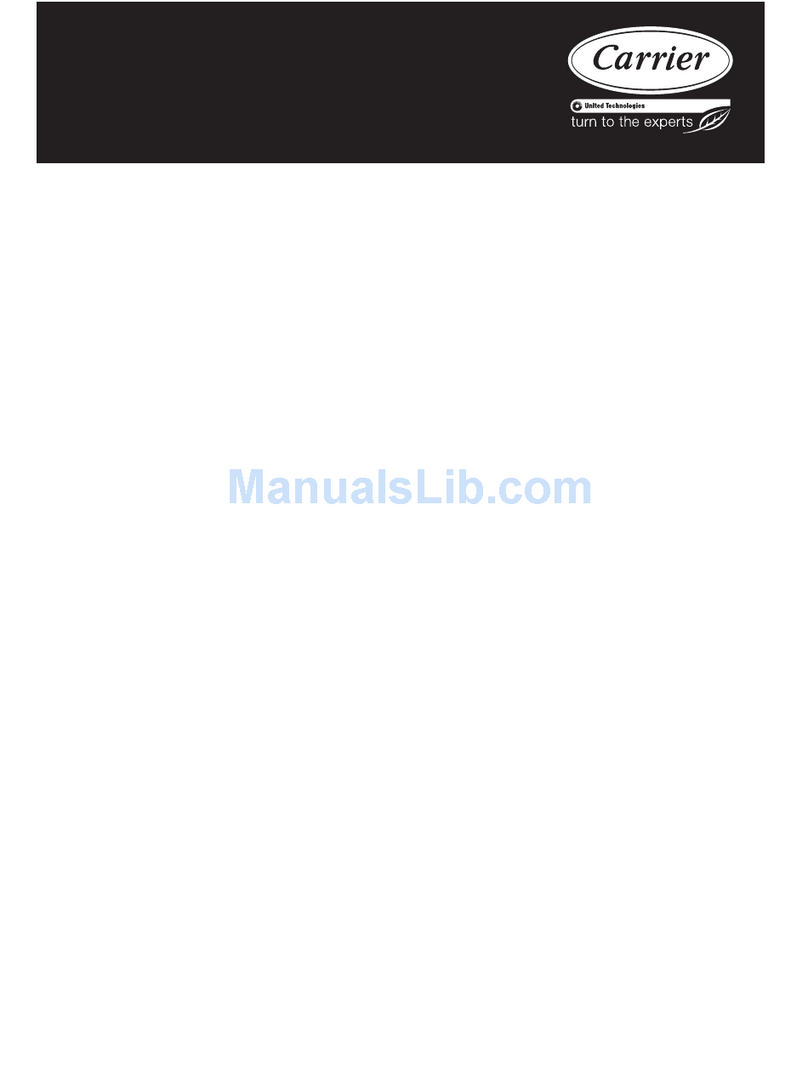
Carrier
Carrier WeatherExpert 48LC installation instructions

Friedrich
Friedrich Kuhl SQ06 installation instructions
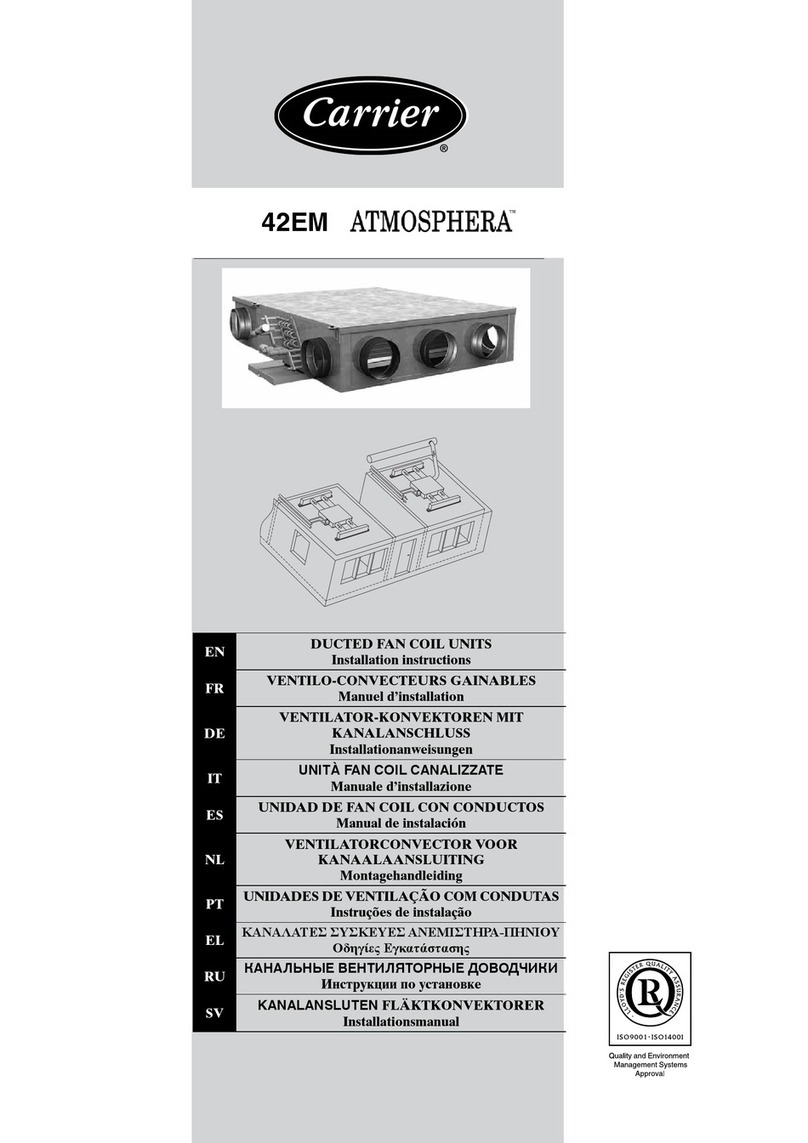
Carrier
Carrier Atmosphera 42EM series installation instructions
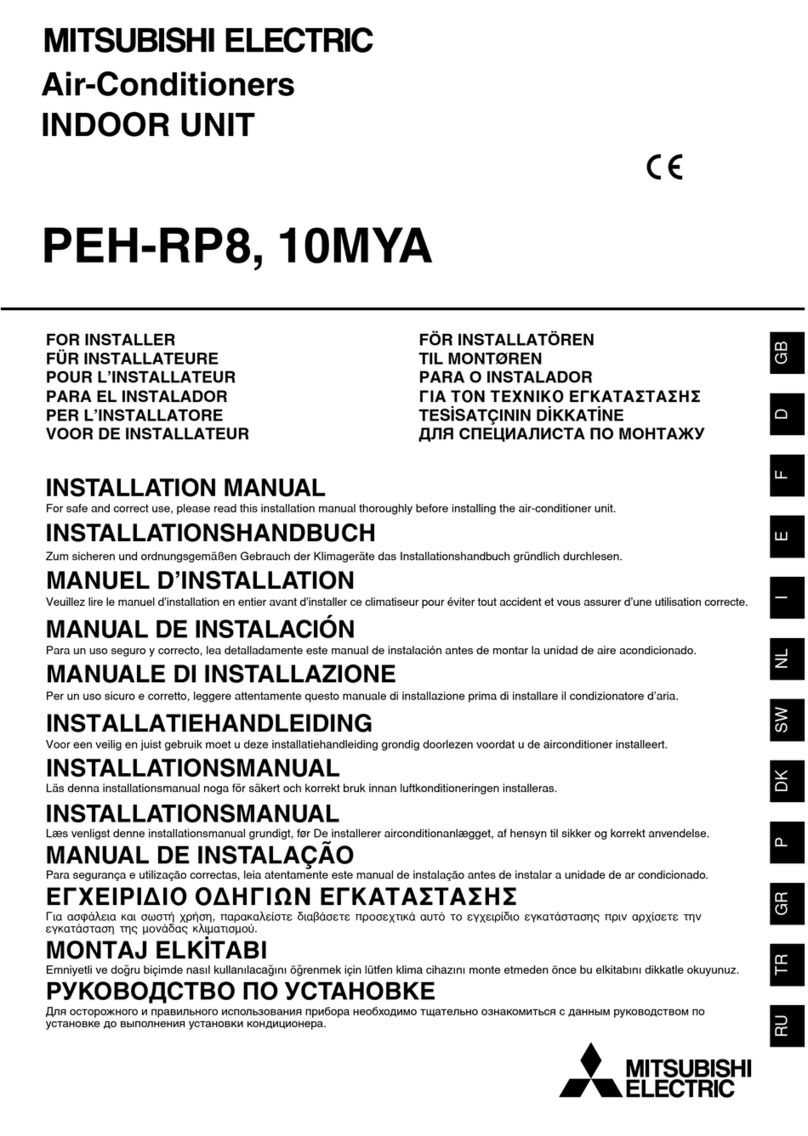
Mitsubishi
Mitsubishi PEH-rp8 installation manual
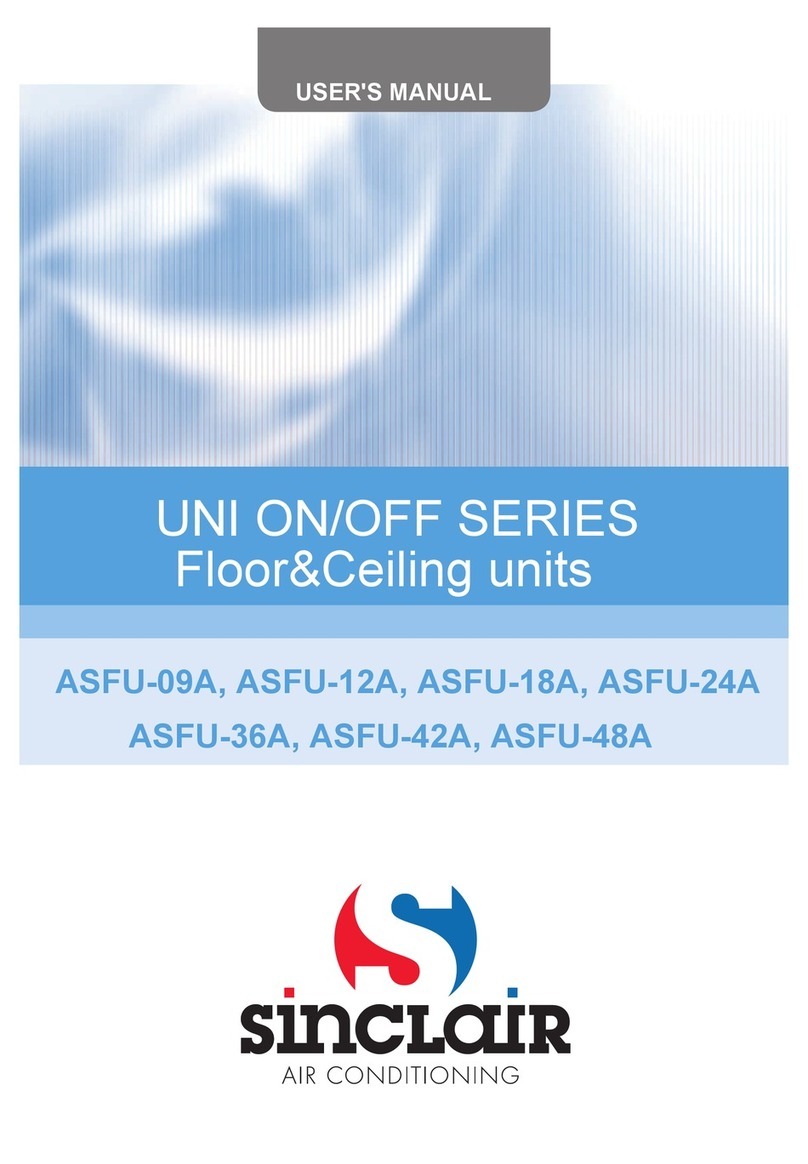
Sinclair
Sinclair ASFU-09A user manual
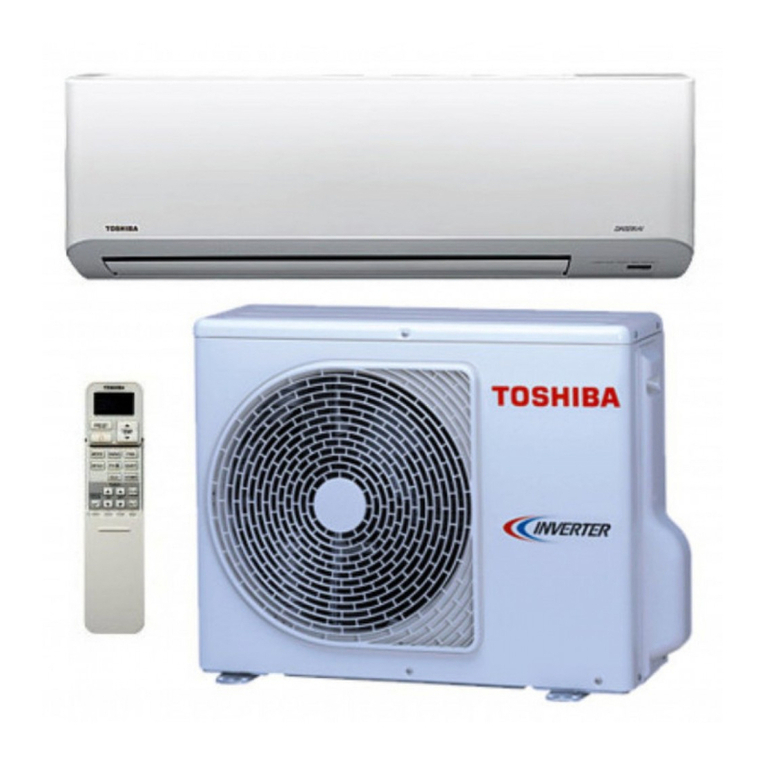
Toshiba
Toshiba RAS-10SKVP2 Series installation manual
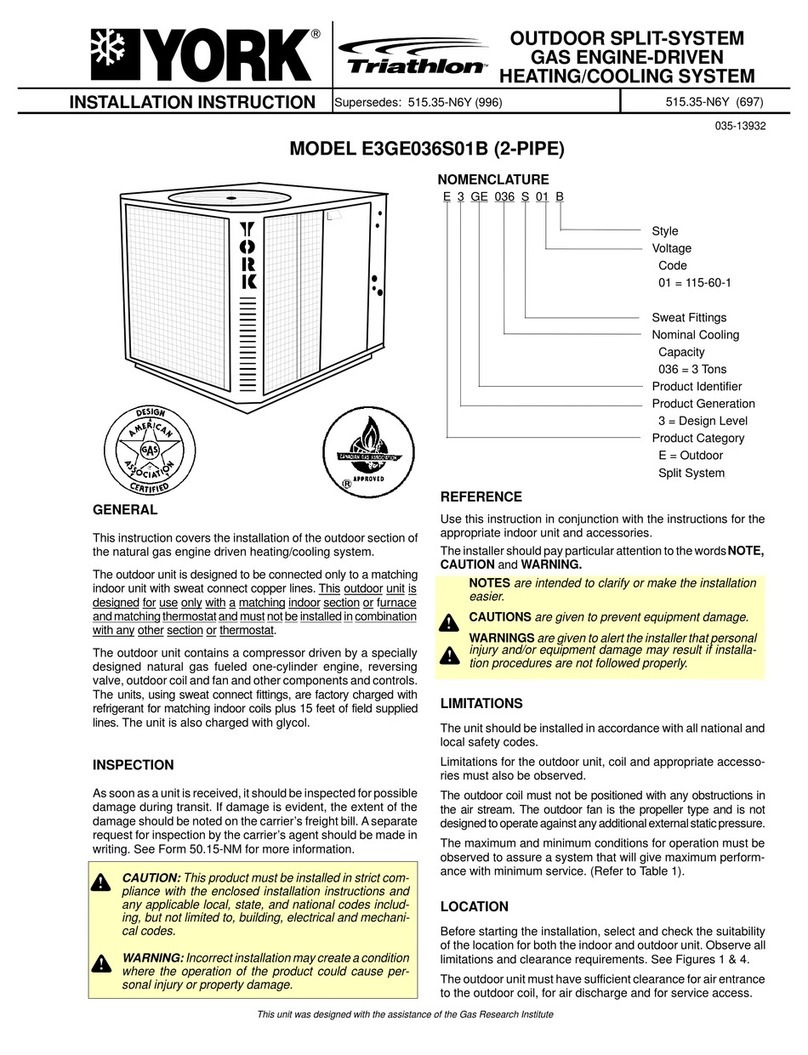
York
York E3GE036S01B installation instructions

Airwell
Airwell HDHC-025N-09M25 User & installation manual
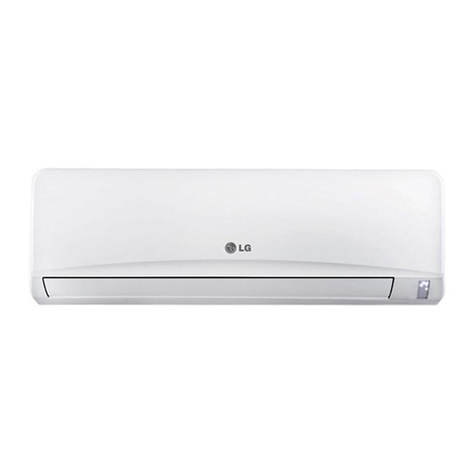
LG
LG G12NHC owner's manual
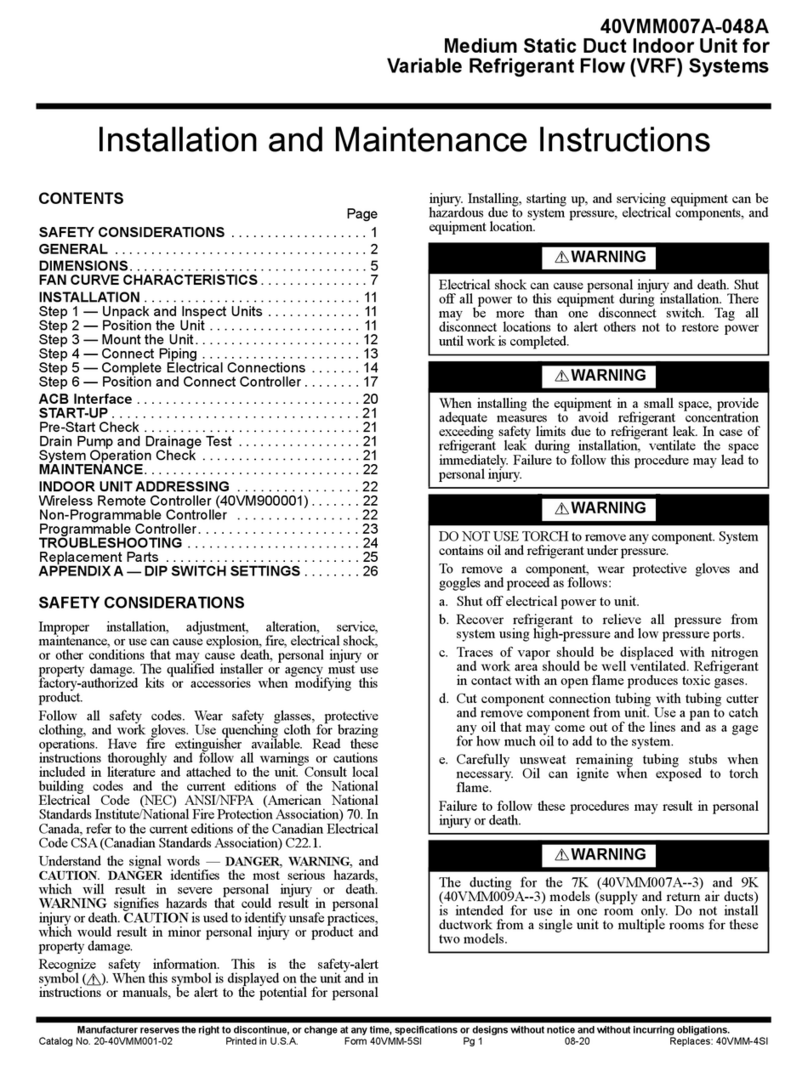
Carrier
Carrier 40VMM007A 3 Series Installation and maintenance instructions
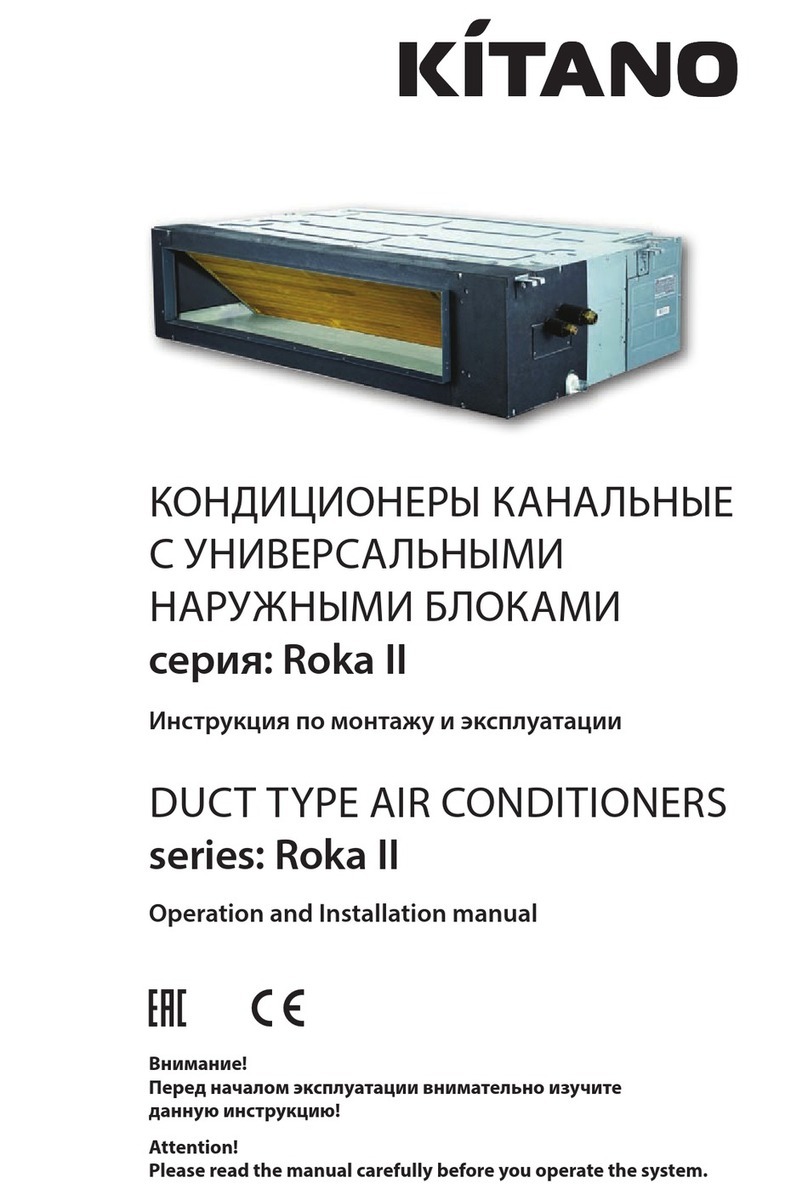
KITANO
KITANO Roka II Series Operation and installation manual
